Original Creator Credits:
Original aircraft from Seredemia's B737-700 and GalacticaAsia's Boeing 737-800W
Cockpit interior from RealSavageMans Boeing 737MAX-8 Southwest
Tail from GuainLorenzo's Southwest Boeing 737-300
Special Thanks To:
CL125 for the thumbnail screenshots
SimpleplanesJP11 for helping to install the cockpit, adding the bank angle alarm, and touching up some details.
BaconAircraft for fixing the autocredit link
About the Boeing 737 and -700 variant
The Boeing 737 is a narrow-body aircraft produced by Boeing at its Renton Factory in Washington. Developed to supplement the Boeing 727 on short and thin routes, the twinjet retains the 707 fuselage width and six abreast seating with two underwing turbofans. Envisioned in 1964, the initial 737-100 made its first flight in April 1967 and entered service in February 1968 with Lufthansa. The lengthened 737-200 entered service in April 1968, and evolved through four generations, offering several variants for 85 to 215 passengers.
The 737-100/200 original variants were powered by Pratt & Whitney JT8D low-bypass engines and offered seating for 85 to 130 passengers. Launched in 1980 and introduced in 1984, the 737 Classic -300/400/500 variants were upgraded with CFM56-3 turbofans and offered 110 to 168 seats. Introduced in 1997, the 737 Next Generation (NG) -600/700/800/900 variants have updated CFM56-7s, a larger wing and an upgraded glass cockpit, and seat 108 to 215 passengers. The latest generation, the 737 MAX, 737-7/8/9/10 MAX, powered by improved CFM LEAP-1B high bypass turbofans and accommodating 138 to 204 people, entered service in 2017.
The 737-700, the first variant of the Next-Generation, was launched in November 1993 with an order of 63 aircraft. The -700 seats 126 passengers in a two-class or 149 passengers in a one-class layout. The launch customer Southwest Airlines took the first delivery in December 1997. The 737-700 replaced the 737-300 and competes with the Airbus A319.
In long-range cruise, it burns 4,440 lb (2,010 kg) per hour at Mach 0.785 (450 kn; 834 km/h) and FL410, increasing to 4,620–4,752 lb (2,096–2,155 kg) at Mach 0.80 – Mach 0.82 (459–470 kn; 850–871 km/h). As of July 2018, all -700 series on order, 1,128 -700, 120 -700 BBJ, 20 -700C, and 14 -700W aircraft, have been delivered. By June 2018, around one thousand were in service: half of them with Southwest Airlines, followed by Westjet with 56 and United Airlines with 39.
The 737-700C is a convertible version where the seats can be removed to carry cargo instead. There is a large door on the left side of the aircraft. The United States Navy was the launch customer for the 737-700C under the military designation C-40 Clipper.
The 737-700ER (Extended Range) was launched on January 31, 2006, and featured the fuselage of the 737-700 and the wings and landing gear of the 737-800. A 737-700ER can typically accommodate 126 passengers in two classes with a range similar to the Airbus A319LR.
Boeing 737-700 Specs & Info
-Length: 33.6m/110 ft 4 in
-Height: 12.5m/41 ft 3 in
-Wingspan: 35.8 m/117 ft 5 in
Aircraft Type Designation
ICAO: B737
IATA: 73G (Standard)/73W (With Winglets)

The 737-700 prototype (Registration N737X) at Boeings Renton Washington facility on October 30th, 1998. Reregistered as N707SA after being delivered to Southwest.

The first 737-700 to enter commercial service with launch customer Southwest (Registration: N700GS) at Los Angeles International Airport (IATA: LAX/ICAO: KLAX) on December 17th, 1997

The cockpit of a Germania 737-75B (Registration: D-AGER) at Kos International Airport (IATA: KGS/ICAO: LGKO) on September 26th, 2018.

The cabin of a Ryanair 737-73S (Registration: EI-SEV) at Kraków John Paul II International Airport (IATA: KRK/ICAO: EPKK) on September 17th, 2015. This is Ryanair's only 737-700. C'mon, if there's a way to put Ryanair in something I'm going to put it in
About Southwest Airlines
IATA Code: WN
ICAO Code: SWA
Callsign: SOUTHWEST
Primary Hubs: Too many to list here
Headquarters: Dallas Love Field (IATA: DAL/ICAO: KDAL)
Years Active: 1967-Present

The current Southwest logo since 2014

A Southwest Boeing 727-227Adv (Registration: N561PE) in 'Desert Gold' livery at Los Angeles International Airport in January of 1984. This aircraft was previously registered N436BN and operated by Braniff International. If this registration sounds familiar, that is because it is the same registration of the first aircraft I released on the site. I am almost at gold and I have come full circle.

A Southwest Boeing 737-3H4 (Registration: N626SW) painted in 'Canyon Blue' livery at Harry Reid International Airport (IATA: LAS/ICAO: KLAS) on January 20th, 2007

A Southwest Boeing 737-8H4(WL) (Registration: N8670A) painted in 'Southwest Heart' livery at Los Angeles International on June 28th, 2015
Southwest Airlines Co., typically referred to as Southwest, is one of the major airlines of the United States and the world's largest low-cost carrier. It is headquartered in Dallas, Texas, and has scheduled service to 121 destinations in the United States and 10 additional countries. As of 2018, Southwest carried more domestic passengers than any other United States airline.
The airline was established on March 15, 1967, by Herb Kelleher and Rollin King as Air Southwest Co. and adopted its current name, Southwest Airlines Co., in 1971, when it began operating as an intrastate airline wholly within the state of Texas, first flying between Dallas, Houston, and San Antonio. It began regional interstate service in 1979, expanding nationwide in the following decades. Southwest currently serves airports in 42 states and multiple Central American destinations.
Southwest's business model is distinct from other US airlines as it uses a rolling hub and point-to-point network and allows free checked baggage. It exclusively uses Boeing 737 jets in its fleet, though has used several leased 727s in the past.
Southwest Airlines was founded in 1966 by Herbert Kelleher and Rollin King, and in 1967 it was incorporated as Air Southwest Co. Three other airlines took legal action to try to prevent the company from its planned strategy of undercutting their prices by flying only within Texas and thus being exempt from various regulations. The lawsuits were resolved in 1970, and in 1971 the airline began operating regularly scheduled flights between Dallas Love Field and Houston and between Love Field and San Antonio, and adopted the name Southwest Airlines Co. In 1975, Southwest began operating flights to various additional cities within Texas, and in 1979 it began flying to adjacent states. Service to the East and the Southeast started in the 1990s. Southwest turned a profit for 47 consecutive fiscal years from 1973 through 2019.
As of late 2022, the airline experienced mass criticism after the airline experienced severe delays and thousands of flight cancellations starting on December 21, 2022, and continuing through the Christmas holiday. While some cancellations were due to bad weather from the severe late December winter storm across much of the United States, industry experts and SWAPA also blamed inadequate staffing and the airline's "outdated" employee scheduling system, citing reports of pilots waiting on hold on the telephone for up to eight hours awaiting work assignments. On December 26, the airline initiated a massive system "reset", preemptively canceling thousands of flights and halting ticket sales over concerns that travelers might buy tickets for flights that are subsequently canceled. Federal officials criticized the airline and U.S. Department of Transportation Secretary Pete Buttigieg announced a formal investigation.
Southwest 1248: Midway Mayhem

The accident aircraft at Nashville International Airport (IATA: BNA/ICAO: KBNA) on November 7th, 2004
Obligatory ‘Not a pilot’ disclaimer
December 8th, 2005. A year old Boeing 737-7H4(WL) (Registration: N471WN) eqipped with two CFM56-7B24 turbofan engines is operating as Southwest Flight 1248 with service from Baltimore/Washington International Airport (IATA: BNA/ICAO: KBNA) to McCarran International Airport with a 1st stopover at Chicago Midway International Airport (IATA: MDW/ICAO: KMDW) and a 2nd stopover at Salt Lake City International Airport (IATA: SLC/ICAO: KSLC).

Intended flight path
The aircraft has 103 occupants on board, 98 passengers, 3 cabin crew, and 2 pilots. In the cockpit and acting as pilot flying is 59 year old Captain Bruce Sutherland, who served in the USAF from 1969-1995 and joined Southwest in 1995. He has 15000 flight hours, 4500 of them on the 737. Acting as pilot monitoring is F.O. is 34 year old Steven Oliver who joined the airline in 2003. He has 8500 flight hours, 2000 on the 737. Prior to the incident, both have a clean safety record.
The aircraft departed from Baltimore around 17:58EST after having been delayed for around two hours due to weather. The flight proceeds normally until the aircraft reaches the vicinity of Chicago Midway which is currently in the middle of a snowstorm, reducing visibility to less than a mile. The flight circles the airport several times over a duration of 30 minutes before attempting to land on Runway 13C which is 6522ft/1987m long. At around 19:15pm CST, the pilots attempted a landing with nearly eight inches of snow on the ground in the area. Airport officials stated that the runway was clear of snow prior to the landing, however the snow was falling faster than it could be cleared. The latest reported weather had the wind from between east and east-southeast blowing 090° at 11 knots.
Due to the winds and the fact that the Runway Visual Range had dropped to 4500ft/1371m and subsequently fell below the requirements for the 13C ILS approach, the pilots opted to instead land on the opposite end, runway 31C, as 31C had lower minimums. In addition, the aircraft now had tailwind, slightly increasing its speed. Alternately, the crew could have held in the air, waiting for the weather to improve, or they could have diverted to another airport, such as Chicago O'Hare International (IATA: ORD/ICAO: KORD), whose substantially longer runways were 10 minutes' flying time away. Each of these options would have entailed considerable additional expense for Southwest, as well as missed connections and significant inconvenience for the flight's passengers. In the investigation afterwards, The National Transportation Safety Board identified the psychological pressure to complete their assigned task as one of the factors contributing to the crew's decision to land at Midway despite unfavorable conditions. Cockpit voice-recorder transcripts indicate the pilots had been concerned about the weather and, prior to landing, jokingly alluded to the movie Airplane!, saying "I picked a bad day to stop sniffin' glue."
The aircrafts auto braking is set to max at it approaches the runway at a speed of 120 knots, which increased to 132 knots due to the tailwind. The aircraft touches down with only 4500ft/1371m of runway left, still plenty of room given the stopping performance of the 737.

Diagram of the touchdown and following events
After touchdown, Captain Sutherland later stated that he couldn’t move the thrust reverser levers from their stowed position. After several seconds, F.O Oliver notices the reversers still haven't deployed, and is able to deploy them without issue 18 seconds after the initial touchdown. At this point, there is only around 1000ft/304m of runway remaining, the aircraft still isn't decelerating normally and the pilots are now inputting full maximum braking manually. Investigations later revealed that the autobraking system was still fairly new on the Southwest fleet and pilot training in the system was inadequate, and both pilots were distracted by the system.
With the aircraft now skidding down the runway at a high speed, the nose gear collapses and the 737 shoots past the end of runway 13C, pierces through both a steel wall and the airport perimeter fence and into the Central Avenue/55th Street intersection. The road was heavily packed with traffic at the time due to the snowstorm and the aircraft strikes several cars and crushes one before coming to a stop.



The aircraft having come to a rest at the intersection, having received substantial damage.
The aircraft performs a successful evacuation with 3 people onboard the aircraft sustaining minor injuries. Nine others that were in their cars are seriously injured, 5 critically so, and are taken to hospital for treatment. Unfortunately, there was one fatality, a 6 year old in the car that was crushed. This was the first incident of a Southwest flight resulting in a fatality (excluding Southwest Airlines Flight 1763, in which a man suffering from an unexplained case of 'air rage', stormed the cockpit and was subdued with such force that he died of asphyxiation.)
The previous major incident was in 2000 when Southwest Airlines Flight 1455, a 737-300, overran a runway at Hollywood Burbank Airport (IATA: BUR/ICAO: KBUR), injuring 43 and narrowly avoiding a catastrophe after almost impacting a gas station. The accident also occurred 33 years to the day after United Airlines Flight 553, a 737-200, crashed while approaching Midway Airport, killing 45. No other major fatality causing incident would occur for Southwest for 13 years until 2018 when Southwest Airlines Flight 1380. a 737-700, experienced an uncontained engine failure and cabin depressurization leading to the partial ejection and death of a passenger.
According to the NTSBs probable causes, "The National Transportation Safety Board determined that the probable cause of this accident was the pilots failure to use available reverse thrust in a timely manner to safely slow or stop the airplane after landing, which resulted in a runway overrun. This failure occurred because the pilots first experience and lack of familiarity with the airplanes autobrake system distracted them from thrust reverser usage during the challenging landing.
Contributing to the accident were Southwest Airlines 1) failure to provide its pilots with clear and consistent guidance and training regarding company policies and procedures related to arrival landing distance calculations; 2) programming and design of its on board performance computer, which did not present critical assumption information despite inconsistent tailwind and reverse thrust assessment methods; 3) plan to implement new autobrake procedures without a familiarization period; and 4) failure to include a margin of safety in the arrival assessment to account for operational uncertainties. Contributing to the severity of the accident was the absence of an engineering materials arresting system, which was needed because of the limited runway safety area beyond the departure end of runway 31C."
The NTSB also concluded that even under the poor braking conditions and the tailwind, the plane could have stopped in time had the pilots deployed the thrust reversers on time. Examination of the reverser system found no evidence of malfunction.
It is now recommended practice for any new runway to have a clear area at least 1,000 feet (300 m) long at each end, called a 'runway safety area' covered with Engineered Material Arresting System (EMAS). EMAS is a material made from a crushable cement that is designed to stop aircraft in the event of an overrun, and is now commonly installed at the end of runways in most major airports.



EMAS in action and how it works
Despite the significant damage to the aircraft, it was repaired and returned to service in September of 2006 after being re-registered as N286WN. It remains in service to this day.

The accident aircraft at Las Vegas McCarran International Airport in 2011, 6 years after the overrun at Chicago Midway.

The reregistered N286WN repainted in ‘Southwest Heart’ livery at Phoenix Sky Harbor International Airport (IATA: PHX/ICAO: KPHX) on February 6th, 2022, still active 17 years after the accident.
Supplementary Materials
NTSB Final Report
NTSB Animation
CVR Transcript
Aviation Safety Network Entry
Mentour Pilot's In Depth Video
ABC7 News Coverage 12/8/2005
Specifications
Spotlights
- RicardoACE 2.2 years ago
- Inuyasha8215 1.2 years ago
- Erc90F4RU 2.1 years ago
- Otana 2.2 years ago
- YarisSedan 2.2 years ago
- Brololxd 2.2 years ago
- JP11 2.2 years ago
- RobertsAeronautics 2.2 years ago
- TheFlightGuySP 2.2 years ago
- RepublicOfCursedPlanes 2.2 years ago
General Characteristics
- Predecessor B737-700
- Successors 6 airplane(s) +7 bonus
- Created On Windows
- Wingspan 118.0ft (36.0m)
- Length 116.0ft (35.3m)
- Height 38.2ft (11.7m)
- Empty Weight N/A
- Loaded Weight 46,663lbs (21,166kg)
Performance
- Power/Weight Ratio 0.822
- Horse Power/Weight Ratio 0.064
- Wing Loading 26.2lbs/ft2 (128.1kg/m2)
- Wing Area 1,778.2ft2 (165.2m2)
- Drag Points 16307
Parts
- Number of Parts 972
- Control Surfaces 9
- Performance Cost 4,161

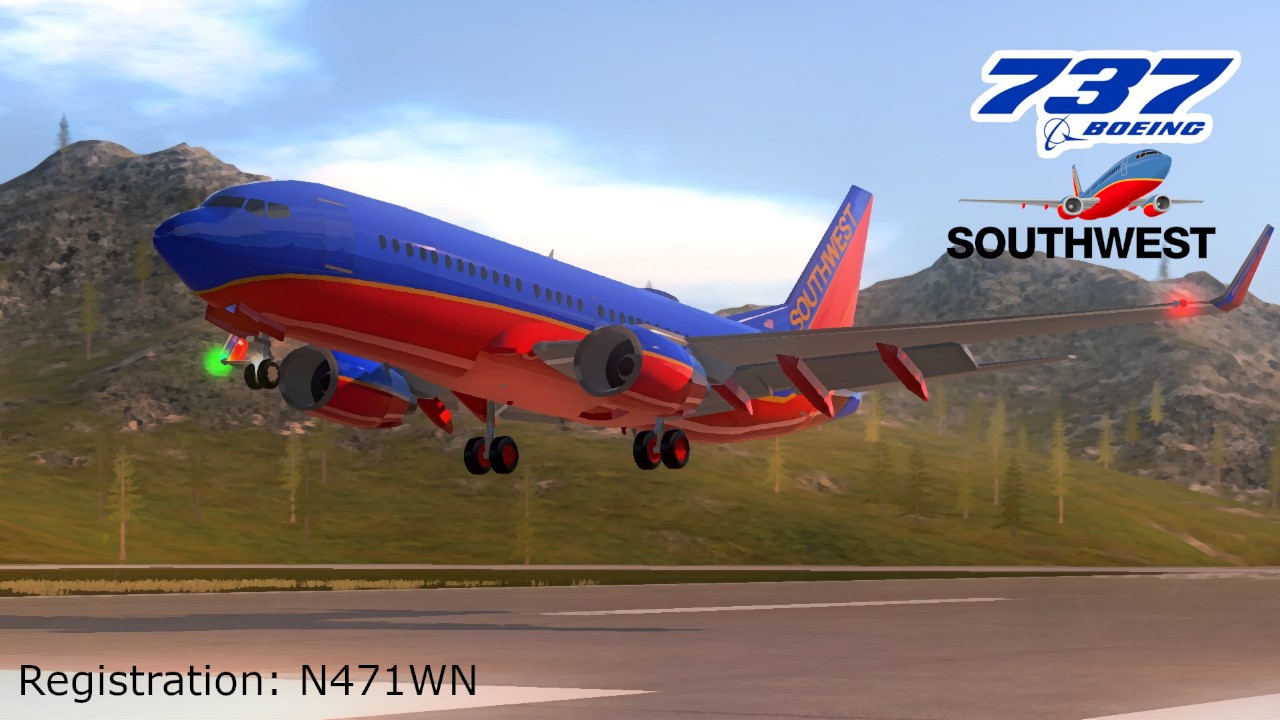

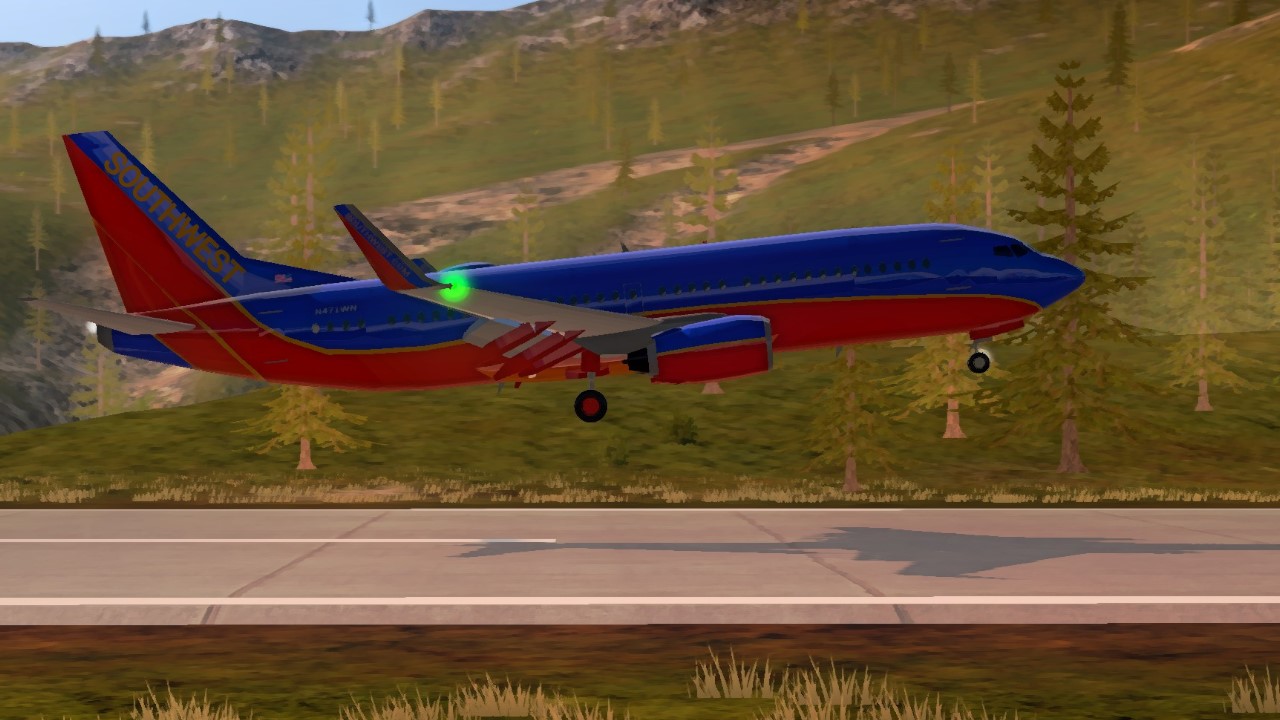
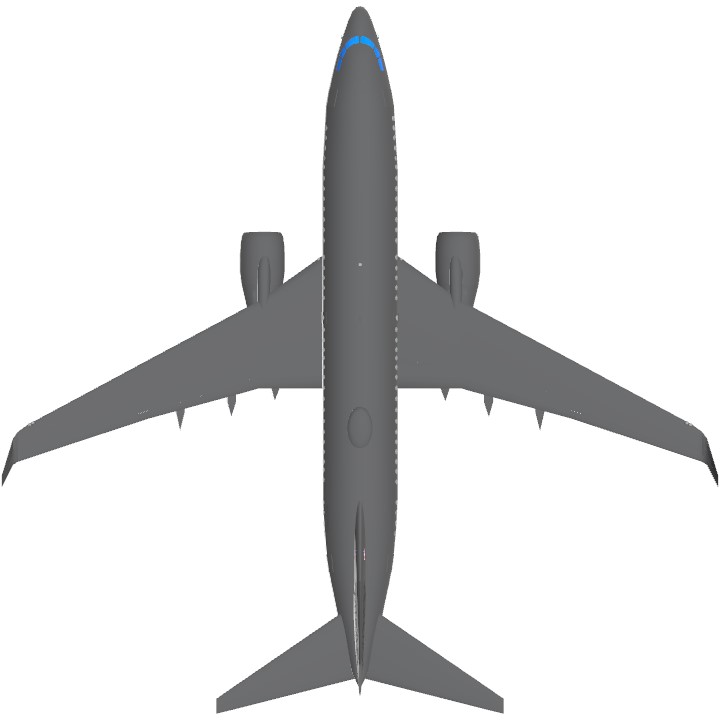
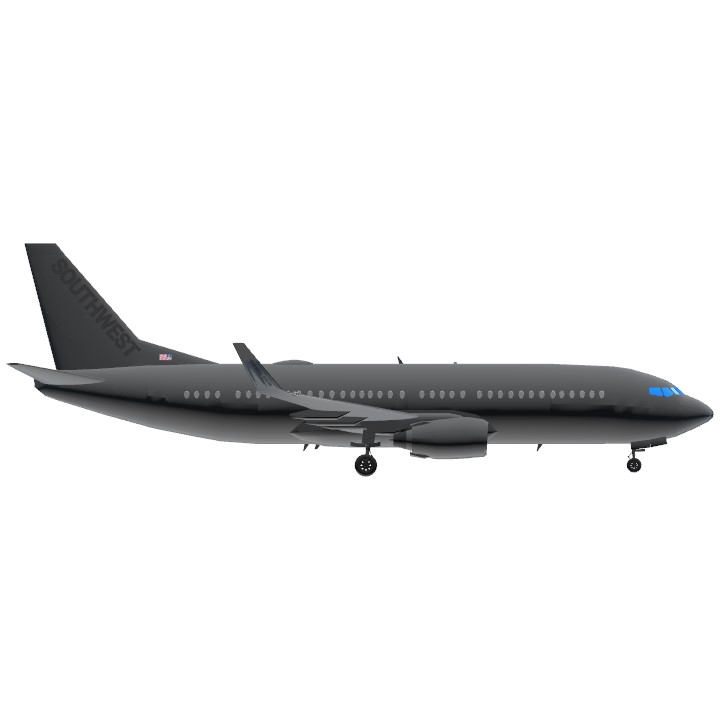
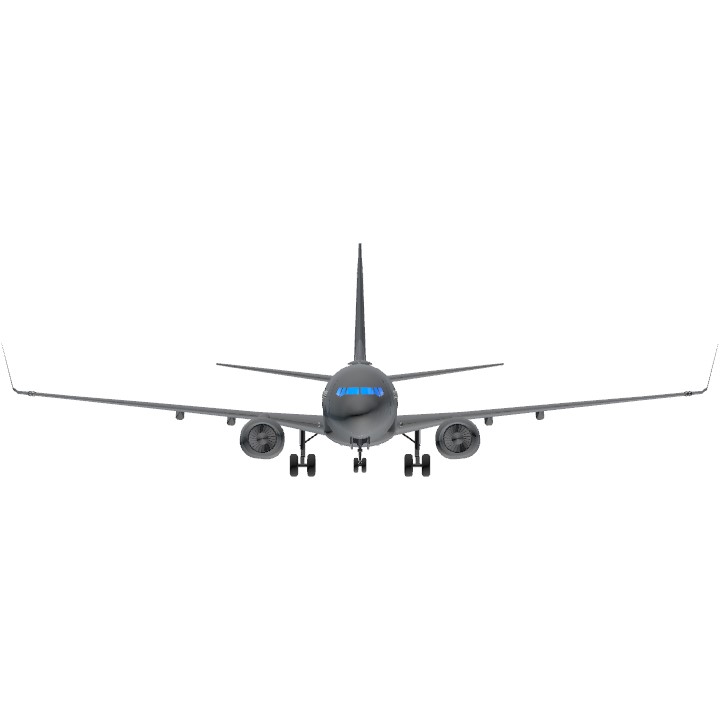
634 Part No Cockpit Potato Device Version
Requested Tags:
@SimpleplanesJP11 @ReinMcDeer
Requested Tags:
@CL125 @TheFlightGuySP
Original Creator Tags:
@realSavageMan @GuianLorenzo
Original Creator Tags:
@GalacticaAsia @Seredamia
@Brololxd
Feels good!
You reached gold!
@TheFlightGuySP
Thank you! Glad to be here
Welcome to the yellow club.
Congrats on getting to gold!
top notch
A little more points till you reach gold!
@DeadlyDialga
goddamn legal bozos
@Graingy
I cannot be held liable for any damages caused by ingesting 737 fuselage, do not try to sue, I have already called Saul.
Better Call Saul theme intensifies
@DeadlyDialga
mouth full of rivets
muffled
NOW you tell me!
@Legomaster0418
"Its been 84 years..."
@Sense2
Only the most extreme realism here
@Graingy
I mean if you want to take a bite, go ahead. I will not be responsible for any injuries caused by said action.
cockpit is so realistic just like a 800!1!1!1!
It looks like it would taste like a tide-pod
Hmm I don't know what to say it's just cool
Ive been waiting for this.
@DeadlyDialga I think that's just SP.com being a bit slow. Sometimes it takes a bit to register upvotes (it takes also takes awhile to send spotlight notifications, sometimes several minutes).
@TheFlightGuySP
I just realized you were so fast I don't think the site registered your upvote. I never got the points lmao.
@TheFlightGuySP
S p e e d. I a m s p e e d.
Still publishing...
I am [the rate at which someone or something is able to move or operate].